Font service launches that's fair for designers
Fontstand is created by type creators and is wise to the concerns of designers who need easy access to pro-grade fonts.
A new font rental and purchase service has launched today which aims not just to make it easier and cheaper for designers to try a broad range of professionally designed typefaces but also to support the work of independent type foundries.
Called Fontstand, it's an app for OS X 10.9 or later which lets designers browse over three hundred font families from 21 foundries, and when you've found a font you want to try, you can install it for use in any app, free for an hour. If you're then convinced you want to use it, you can rent it for a month for 10 per cent of its purchase price, and any rented font can be shared with a co-worker for an additional 2 per cent.
And here's the kicker: any font rented for a total of 12 months, even non-consecutively, automatically becomes yours to keep and use forever. Sure, that will work out a little more expensive than just buying outright, but for many it will be worth it for the flexibility of per-month renting for some one-off client jobs, for example, and it's a model we wish other markets would adopt.
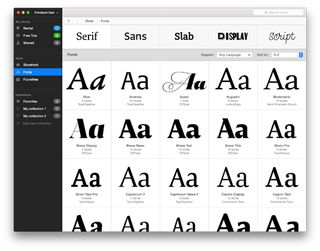
There are some limitations. You can't rent fonts to be used as web fonts, nor for embedding in custom apps, for example, but co-founder Peter Bil'ak told us, "We provide links to foundries on the font pages, and when clients request a type of licence that Fontstand doesn't offer (such as embedding into software or hardware) then we redirect the client directly to the foundry. That's why we work with foundries which have their own stores."
You might also be concerned that because Fontstand is working only with indie foundries that you'll miss out on some important and mainstream fonts from giants such as Monotype and its subsidiaries – and it's hard to imagine how they'd ever come on board with Fontstand.
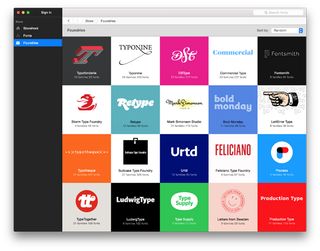
Bil'ak, though, is bullish when asked about that; it's clear this is something of a crusade as well as a clever and useful business model. "Fontstand represents a resistance of indie foundries," he tells us; "the ones that don't discount fonts (most of the labels on MyFonts operate by providing 90 per cent discounts), and that create high quality fonts, and Fontstand makes them more affordable by allowing rentals. The 21 foundries on Fontstand (and there might be some more) represent the visual culture of today, are very influential, and you see their work everywhere.
"I think type users will enjoy curated selection of type, rather then going through 20,000 fonts that Monotype has amassed, most of which are hardly useable because they are clones on previously competing foundries which all ended up under the same label."
Get the Creative Bloq Newsletter
Daily design news, reviews, how-tos and more, as picked by the editors.
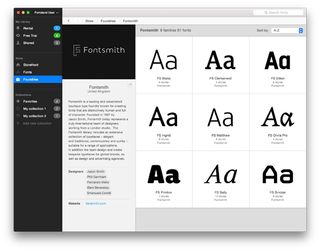
That dominance of Monotype in the type industry is clearly a concern for indies. Jason Smith, the founder of Fontsmith, said, "Independent foundries are finding it harder and harder to compete with the monopolies of Monotype and Adobe Typekit. Fontstand aims to support foundries, like ours, who employ highly skilled people to craft beautiful fonts with distinct stories. It gives us a way to let new user groups – particularly students, freelancers and small businesses – trial our fonts on projects while allowing us to protect our IP and our businesses more widely."
That protection on intellectual property is always a tricky balance; make it too tough and you make it hard for designers to try and get fonts, but too loose and piracy can become rife. We asked Bil'ak about that; "Our focus was on making doing the right thing easy, rather than restrictions," he said. "More and more foundries are relaxing their rules – 10 years ago, they would not even allow embedding fonts into PDF; today with the advent of web fonts, many even give away free demos. We took measures that the fonts are not easy to copy, but the priority is that the fonts are easy to try and easy to license."
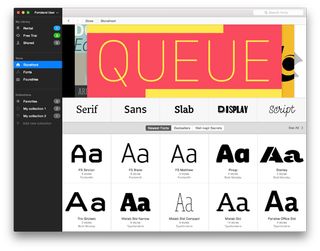
Certainly that was a driving force for Christian Schwartz, a partner at Commercial Type. "We're hoping to cut down on the requests for temporary licenses to test our fonts," he told us. "We've been forced to say no to almost everyone who contacts us about this, because it's simply too much work to issue and keep track of these licences."
Ultimately, it strikes us that Fontstand is on the side of the angels, and we're cautiously optimistic. There's a strong selection of beautiful typefaces – which will hopefully grow even further as it proves itself in the industry – and a pricing model that appears to make terrific sense both for the designers who create type and for those who use it.
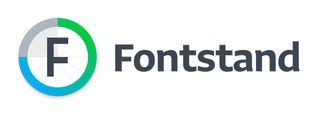
Let's leave the last word to Christian Schwartz, who told us, "I think the type market is ripe for innovation as far as platforms and ways of selling font licences are concerned, and it's not in the best interest of type designers or users to cede all of the innovation to corporate bean-counters who see type as a commodity and users as nothing more than a revenue stream. Fontstand hasn't even been up and running for 24 hours yet, so I can't really guess how it's going to be received, but we wouldn't have signed up if we didn't think it had a chance!"
What do you think? Let us know in the comments below, especially if you've decided to give Fontstand a try!
Liked this? Read these!

Thank you for reading 5 articles this month* Join now for unlimited access
Enjoy your first month for just £1 / $1 / €1
*Read 5 free articles per month without a subscription

Join now for unlimited access
Try first month for just £1 / $1 / €1
The Creative Bloq team is made up of a group of design fans, and has changed and evolved since Creative Bloq began back in 2012. The current website team consists of eight full-time members of staff: Editor Georgia Coggan, Deputy Editor Rosie Hilder, Ecommerce Editor Beren Neale, Senior News Editor Daniel Piper, Editor, Digital Art and 3D Ian Dean, Tech Reviews Editor Erlingur Einarsson and Ecommerce Writer Beth Nicholls and Staff Writer Natalie Fear, as well as a roster of freelancers from around the world. The 3D World and ImagineFX magazine teams also pitch in, ensuring that content from 3D World and ImagineFX is represented on Creative Bloq.
